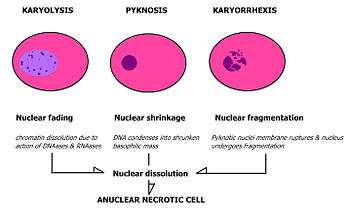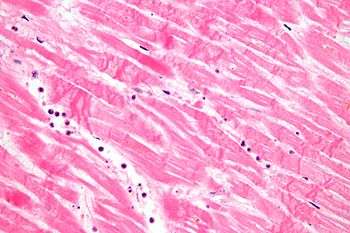Karyolysis

Karyolysis (from Greek κάρυον karyon, "kernel, seed or nucleus", and λύσις lysis from λύειν lyein, "to separate") is the complete dissolution of the chromatin of a dying cell due to the enzymatic degradation by endonucleases. The whole cell will eventually stain uniformly with eosin after karyolysis. It is usually associated with karyorrhexis and occurs mainly as a result of necrosis, while in apoptosis after karyorrhexis the nucleus usually dissolves into apoptotic bodies.[1]
Additional images
-

Micrograph showing karyolysis and contraction band necrosis in an individual that had a myocardial infarction (heart attack).
-

Micrograph showing karyolysis and contraction band necrosis (left of image) and ischemic (nucleated) cardiac myocytes (right of image) in an individual that had a myocardial infarction.